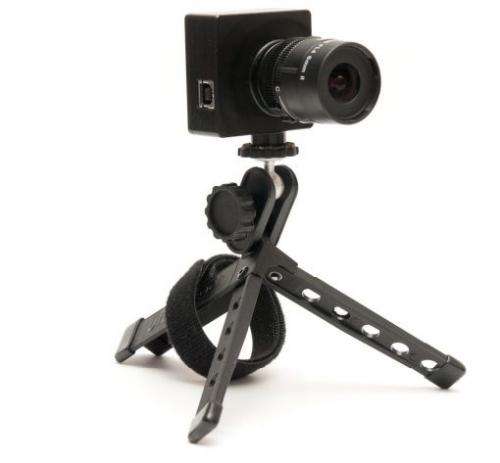August 26, 2013 weblog
Dynamic Vision Sensor tech works like human retina

(Phys.org) —If technology expertise can advance artificial intelligence, what can we imagine for artificial vision? An interesting development in artificial vision comes from a Swiss company iniLabs. They have developed a camera that behaves like the human eye, based on the wonders of the human retina. Just as robotics developers take their cues from biology, this Swiss team has recognized how biology can inspire an alternative to conventional machine vision. The workings of the human eye require far less power than a digital camera would require and leave less information to be processed. Borrowing from the way the eye functions, the company has built a more efficient digital camera.
Zurich-based iniLabs Ltd is a spinoff of the Institute of Neuroinformatics of the University of Zurich and the ETH Zurich. They describe their business as designing, producing, and selling neurotechnological systems. Their eye-like camera is the VS128 Dynamic Vision Sensor (DVS).
Making a case for DVS advantages, iniLabs said that conventional vision sensors see the world as a series of frames, which is inefficient. "Successive frames contain enormously redundant information, wasting energy, computational power and time. In addition, each frame imposes the same exposure time on every pixel, making it impossible to process scenes containing very dark and very bright regions."
The DVS, in contrast, works like the human retina. Power, data storage and computational requirements are drastically reduced, and the dynamic sensor range is increased by orders of magnitude due to the local processing—no sending out of entire images at fixed frame rates. "Only the local pixel-level changes caused by moving in a scene are transmitted – at exactly the time they occur. The result is a stream of events at microsecond time resolution, equivalent to or better than conventional high-speed vision sensors running at thousands of frames per second."
DVS has been built to work with IBM's brainlike architecture called TrueNorth. Just as the Swiss team is inspired by biology, IBMs TrueNorth technology has been focusing on a biology-inspired programming approach that mimics what goes on inside the brain. The technical definition of TrueNorth is "a novel modular, non-von Neumann, ultra-low power, compact architecture." MIT Technology Review explains TrueNorth 's approach in that it "stores and processes information in a distributed, parallel way, like the neurons and synapses in a brain."
The price of the DVS is about $2700 and could be put to work in areas such as microscopy, recording traffic and robotics—scenarios in spotting changes, where quick reaction times are necessary.
The iniLabs team poses examples of what kinds of solutions the DVS brings: "You need to react quickly to moving objects in uneven lighting conditions. Conventional video cameras are too slow and specialized high frame rate cameras produce too much data to process in real time. Both of these conventional solutions require very high and even lighting at high frame rate." That is where the DVS sensor could be of help. The company site shows a robotic goalie with 550 effective frames per second performance at 4 percent processor load.
Another use could be in sleep disorder research. "Conventional video cameras record huge amounts of boring data where the subject is not moving, making it very labor intensive to manually annotate the behaviors." The company said that the DVS "only outputs subject movements. Instead of playing back the data at constant frame rate, you can play it back at constant event rate, so that the action is continuous."
More information:
www.inilabs.com/products/dvs128
www.inilabs.com/images/documents/DVS-Flyer.pdf
www.inilabs.com/products/dvs128/videos
© 2013 Phys.org



















